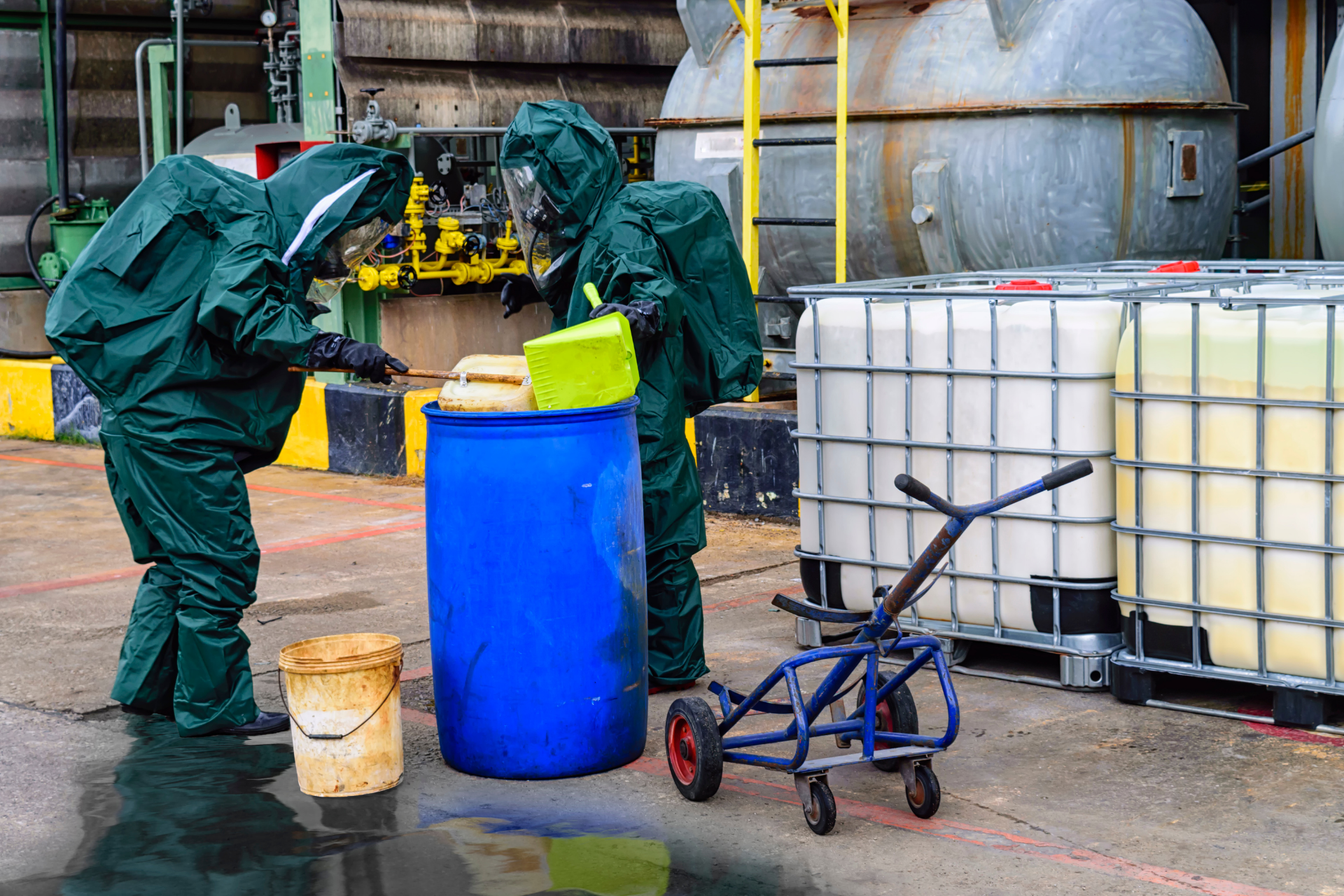
A chemical spill or uncontrolled chemical release can be anything from a material spill on the street to a gas leak in your home.
Residents anywhere in the City could be displaced for a few hours or for an indefinite period. Examples of commonly occurring hazardous chemicals include:
- Paints
- Cleaning chemicals, degreasers and detergents
- Gas cylinders, refrigerant gases, diesel fuel and petrol
- Pesticides and herbicides
- Asbestos
- Flammable liquids and gases
- Corrosives such as acids and alkalis
If not managed or handled correctly harmful chemicals can cause fires, explosions, corrosion, and hazardous reactions. They can have an adverse effect on your immediate and long-term health. They can also cause harm to property and have an adverse effect on the environment. It is common to see road closures and evacuations in response to a chemical spill.
An individual who purchases and uses chemicals should:
- Know what the chemicals are for
- Have a control system for transport, storage, use and disposal.
- Be aware of the hazardous properties of the chemical and how it reacts with other chemicals
- Maintain any structure, plant or system of work that is needed in the use, handling storage or transportation of hazardous chemical.
Business with harmful or hazardous chemicals
Privately owned businesses have an obligation to protect the community when using chemicals. It is their responsibility to manage the risks to health and safety associated with their business. Failure to adequately manage the risks associated with hazardous chemicals is a breach of WHS laws.
Transporting hazardous chemicals
There are laws in South Australia that set out the requirements for transporting dangerous goods. If you have questions about transporting hazardous chemicals or dangerous goods you should contact the transport regulator.
If you are using, storing or transporting hazardous chemicals, at home or in your workplace you should have a comprehensive spill plan prepared. Some chemicals will require you to notify the Metropolitan Fire Service (MFS) of the details of your substances, potential quantities and plan.
Spill Plan
Your spill plan should include (but is not limited to):
- Document the steps you are taking to prevent and contain a possible spill
- Includes requirements associated with all relevant legislation
- Detail of regular assessment of:
- Potential spills
- Containers (cracks, gaps, corrosion, etc.)
- Training should include:
- Actions for spill response specific to the chemicals involved
- Guidelines for emergency response
- Absorbent mats, pads, and socks used to prevent spills
- Training certification should always be up to date
Proper equipment
Spill kits designed for chemical spill are considered a good practice. As part of all spill kits make sure the correct personal protective equipment is available.
To report a serious spill or life-threatening situation call 000 (triple zero) and ask for the Metropolitan Fire Service (MFS).
- Provide as much information as you can without endangering yourself:
- Address of incident
- Name of chemical involved if known
- Estimate the amount of chemical spilt
- Form of chemical (solid, liquid, gas),
- Details of any people affected or injured,
- Details of any vehicles involved
- Notify people in the immediate vicinity and secure the area if possible
- Stay away from accident victims (isolate contaminated individuals)
- Try to remain upwind of the spill
- Do not touch or breathe in the chemical
Managing Spills
You should only enact the spill plan if:
- You are trained to do so
- You are using the correct protective equipment
- You follow all instructions given to you by emergency services
- You do not touch any harmful substance
How to shelter
- Go inside as quickly as possible
- Shut all external windows and doors and turn off all heating and cooling
- If necessary, create a safe room:
- Shut the internal doors
- Seal areas where air can get in
- Close curtains and blinds
- Tune into your local ABC radio station for information and updates
- Do not leave the shelter unless you are told to do so by emergency services
